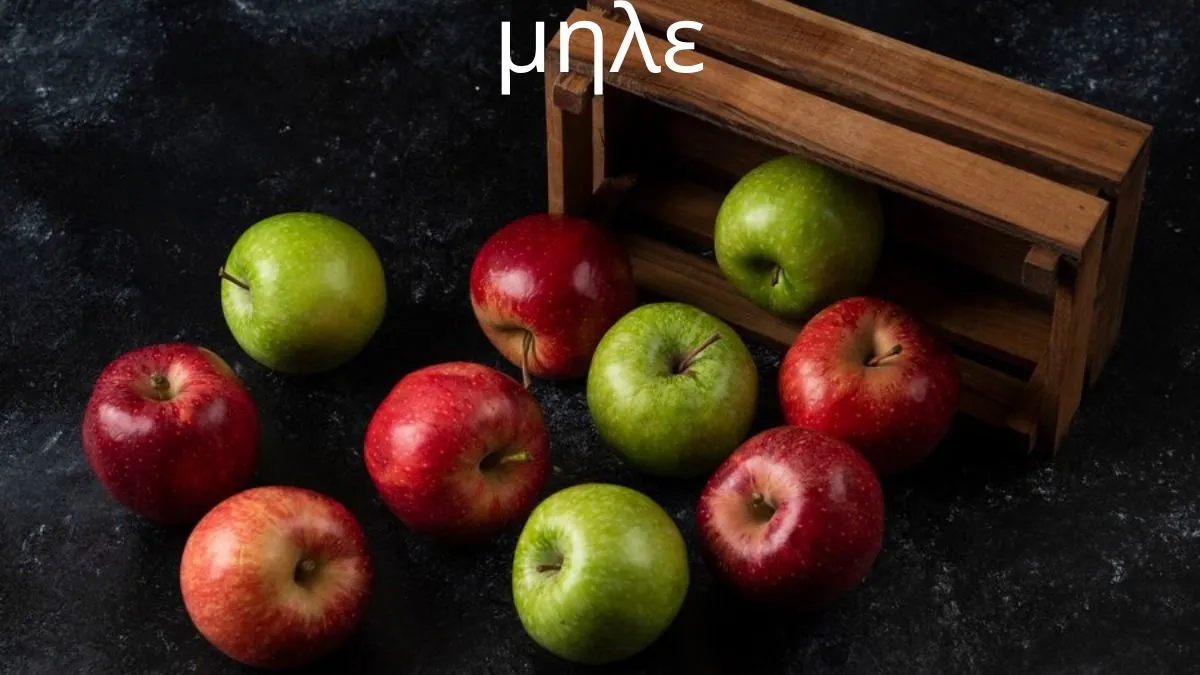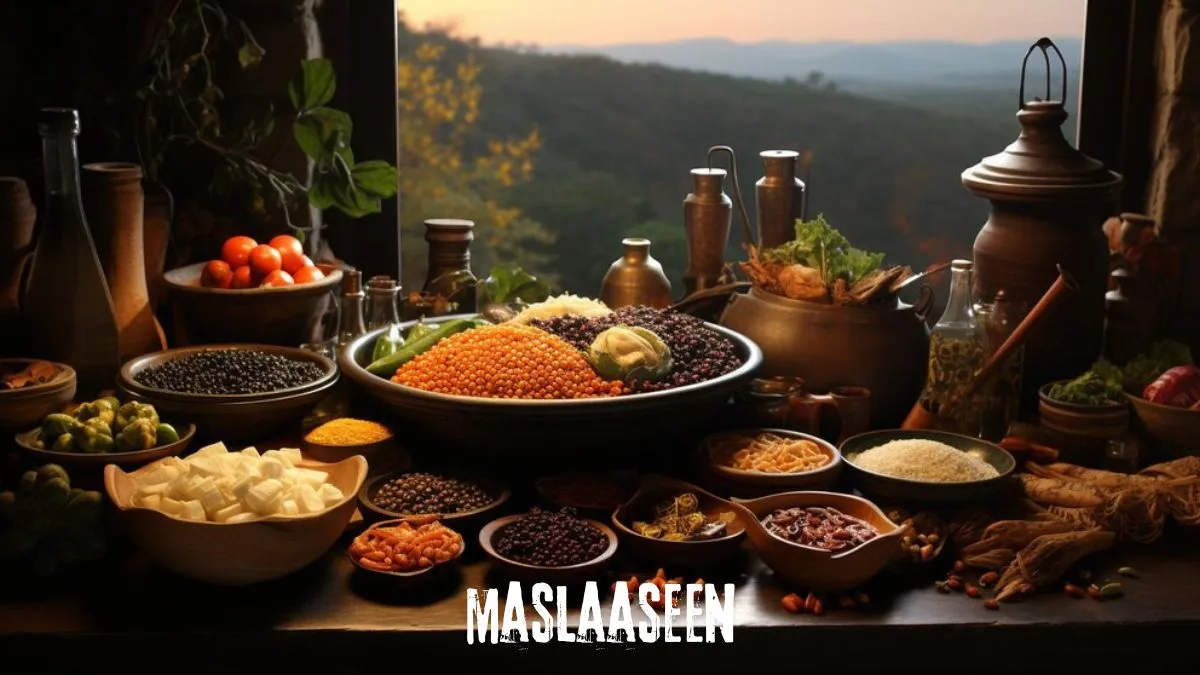FOOD
Delights of Käntäj: A Culinary Journey Through Nordic Tradition

The traditional Nordic meal known as käntäj has its roots in Finland and Sweden. Because of its distinctive flavor and cultural importance, it has become a global phenomenon while also holding a special position in the culinary traditions of the nations that produce it.
History and Origin
Käntäj is a centuries-old custom with strong ties to the cultural heritage of the Nordic countries. This dish has its roots in the diet of nomadic people, who subsisted mostly on wild game and other forest products. Although there are regional spelling and pronunciation variants, the word “Käntäj” is generally thought to have Finnish roots.
Health Benefits
In addition to being a tasty food, käntäj has many positive effects on your health. For those trying to eat healthily, it’s a good choice because it’s high in protein, vitamins, and minerals. It is a healthy option since it is made with fresh ingredients like woodland berries and wild animals, which increases its nutritional content.
Cultural Significance
The cultural importance of Käntäj far outweighs its nutritional value for the Nordic nations. Families and communities together to savor this traditional treat at gatherings, festivals, and festivities. Traditional rituals and practices abound in the making and eating of Käntäj, which attest to the abundance of cultural history in the area.
How to Prepare Käntäj
Due to the careful nature of the hunting, collecting, and cooking processes involved in preparing Käntäj, one must possess both expertise and patience. Game meat (elk, moose, reindeer, etc.), berries from the forest, herbs, and spices are the main components. Tender and tasty meat is the product of meticulous seasoning and gradual cooking.
Variations and Recipes
There are a lot of regional adjustments and changes to the fundamental recipe for Käntäj, but overall it stays the same. To elevate the taste profile, some recipes call for smoked salmon, root vegetables, or mushrooms. There are a lot of ways to spice up a classic dish, and each variant gives you a chance to get creative.
Where to Find Käntäj
Although Käntäj has its origins in Nordic cuisine, it has also become popular in restaurants across the world. The increasing demand from foodies looking for genuine Nordic flavors has led to an increase in the number of restaurants and specialized food stores offering Käntäj on their menus. Online marketplaces also make Käntäj ingredients and ready-to-eat meals more widely available.
Sustainability and Conservation
Responsible collection and conservation techniques regarding Kän’täj components are becoming more important as people become more conscious of the need to keep the planet habitable. The supply of game meat and forest berries for future generations depends on our capacity to hunt and forage in a way that doesn’t harm the fragile ecosystems from which they are obtained. Consumers may help preserve Nordic biodiversity by purchasing products that are made in an ethical and environmentally conscious manner.
Conclusion
The gastronomic joy of Käntäj also symbolizes the cultural wealth and natural bounty of the Nordic countries. Regardless of where it comes from or how popular it is now, Kän’täj has always been a beloved traditional Swedish dish that brings people together through shared traditions and delicious food. No matter if you’re having it at home or in a restaurant, Kän’täj will take your taste buds on a magical tour of Nordic cuisine.
FAQs
Is Käntäj similar to other Nordic dishes?
Although it is comparable to other Nordic cuisines, Kän’täj has its own distinct flavor and way of preparation.
Can I substitute ingredients in the Käntäj recipe?
Although traditional Kän’täj recipes call for certain ingredients, you can easily adapt them to suit your tastes or dietary needs.
Is Käntäj suitable for vegetarians or vegans?
Those who are vegetarian or vegan should not attempt to make traditional Kän’täj since it usually calls for game meat. Nonetheless, with little ingenuity in ingredient swaps, vegetarian options could be achievable.
What is the best way to enjoy Käntäj?
To round up a traditional Nordic meal, try some lingonberry sauce and roasted veggies with some freshly cooked Kän’täj.
Is Käntäj difficult to prepare at home?
Even though making Kän’täj at home with the correct materials and methods takes some time and care, it is definitely doable.
FOOD
Understanding Μηλε: A Comprehensive Insight

When we talk about “μηλε,” we dive into a fascinating blend of history, culture, and modern technology. The term “μηλε” refers to the Greek word for apple, which holds significant symbolic and practical importance in various contexts. This article explores the diverse aspects of the apple, especially focusing on its technological, historical, and cultural significance.
Historical Background of Μηλε
The μηλε has a rich history, often symbolizing knowledge, immortality, and temptation. In Greek mythology, the golden apple played a crucial role in the events leading to the Trojan War. This historical context sets the stage for understanding the broader implications of the apple in various cultures. References to the apple in ancient Greek literature further emphasize its importance. Works by Homer and other classical writers often mention apples, highlighting their role in daily life and mythology.
The Apple in Modern Culture
Today, the apple continues to symbolize health, education, and even innovation. The phrase “an apple a day keeps the doctor away” underscores its association with health and wellness. The apple’s presence in literature, films, and television shows indicates its ongoing relevance. Whether it’s the poisoned apple in fairy tales or the apple logo of a leading technology company, its symbolic power remains strong.
Scientific Perspectives on μηλε
μηλε are celebrated for their nutritional benefits. They are rich in vitamins, minerals, and fiber, making them an essential part of a balanced diet. Research indicates that apples may reduce the risk of chronic diseases, including heart disease, diabetes, and cancer. Their high antioxidant content helps combat oxidative stress, promoting overall health.
Economic Implications of the μηλε Industry
The μηλε industry is a significant player in the global economy. Market trends show a steady increase in apple production and consumption worldwide. From farming to retail, the apple industry offers numerous business opportunities. Innovations in apple cultivation and marketing continue to drive the industry’s growth.
Technological Innovations Related to μηλε
Technological advancements have revolutionized apple farming. Precision agriculture, genetic modifications, and sustainable practices have improved yield and quality. Innovative apple-based products, such as cider, apple sauce, and even skincare items, reflect the versatility of this fruit. These products cater to diverse consumer needs and preferences.
Environmental Considerations
The environmental impact of apple farming includes concerns about pesticide use, water consumption, and carbon footprint. Addressing these issues is crucial for sustainable production. Adopting eco-friendly practices, such as organic farming and integrated pest management, helps minimize the environmental impact of apple cultivation.
Cultural and Social Perspectives
μηλε play a significant role in cultural traditions and social practices. From harvest festivals to educational programs, they are integral to many community activities. Local apple orchards and farmers’ markets contribute to community well-being by providing fresh produce and fostering social connections.
Challenges and Controversies
The apple industry faces challenges such as disease outbreaks, climate change, and market fluctuations. These issues require strategic management and innovative solutions. Discussions around genetic modification and organic farming practices often spark debates. Balancing innovation with consumer preferences and safety is a key concern.
Conclusion
In summary, the μηλε is more than just a fruit; it is a symbol of health, knowledge, and innovation. Its historical significance, cultural impact, and economic value make it an essential part of our lives. Understanding and appreciating the apple’s multifaceted nature helps us leverage its potential for positive change. As we continue to innovate and adapt, the apple will undoubtedly remain a cornerstone of our culture and economy.
FAQs
What is the origin of the term “μηλε”?
The term combines the Greek word “μηλε,” meaning apple, with its modern usage in various contexts, symbolizing knowledge and health.
What are the health benefits of μηλε?
μηλεare rich in vitamins, minerals, and antioxidants, which help reduce the risk of chronic diseases and promote overall health.
How has technology impacted apple farming?
Technological advancements have improved apple farming through precision agriculture, genetic modifications, and sustainable practices.
What are some challenges faced by the μηλε industry?
The μηλε industry faces challenges such as disease outbreaks, climate change, and market fluctuations, requiring strategic management and innovative solutions.
Why is the μηλε significant in modern culture?
The μηλε symbolizes health, knowledge, and innovation, and is prominently featured in literature, media, and as a logo for a leading technology company.
BLOG
Maslaaseen: A Comprehensive Overview

Maslaaseen is a period that has gained interest in various fields, including traditional medicine, cultural practices and culinary arts. This article aims to offer a complete assessment of Maslaaseen, exploring its origins, uses, benefits and significance in specific contexts. By delving into the intricacies of maslaaseen, we hope to shed light on its multifaceted nature and its significance in both modern and historical settings.
Origin of Maslaaseen
The origins of masalaasen can be traced back to historical cultures where it was respected for its medicinal and healing properties. The time period itself is derived from a mixture of words in unique languages, reflecting its diverse roots and vast usage.
Traditional use of Maslaaseen
In traditional medicine, maslaaseen is used for its purported recuperative properties. It was commonly used as a remedy for a variety of ailments, including digestive problems, breathing problems, and pores and skin ailments. The Maslaaseen education covered many botanicals, each chosen for its precise blessing. Traditional healers regularly combined these ingredients to create potent concoctions.
You might also like:Redefining Culinary Experience with Intrepidfood.eu
Cultural significance
Maslaaseen has great cultural value in many communities. It is regularly used in rituals and ceremonies, symbolizing purification and safety. In some cultures, the maslaaseen is considered a sacred detail and its use is followed by specific rituals and prayers. Cultural practices surrounding Maslaaseen vary widely, reflecting the richness of traditions in different regions.
Culinary applications
In addition to its medicinal and cultural uses, maslaaseen is also prominent in the culinary arts. Often used as a spice or seasoning, it gives dishes a unique taste and aroma. Culinary uses of masalaasen vary by location, with each subculture incorporating it into its cuisine in a distinctive way. Maslaaseen, whether used in savory dishes or sweet cuisine, adds to the overall flavor and charm of food.
Contemporary relevance
Today, the significance of Maslaaseen goes beyond conventional practices. It is increasingly being studied for its ability to provide health benefits and healing programs. Modern studies have begun to investigate the biochemical habitats of maslaaseen in order to understand its mechanisms of movement and capabilities for use in modern medicine. This ongoing study paves the way for new programs and a deeper understanding of Maslaaseen.
Health benefits of Maslaaseen
Maslaaseen is believed to offer a number of health benefits. It is often linked to its anti-inflammatory, antioxidant and antimicrobial properties. These attributes make it a valuable factor in herbal fitness remedies. Some studies support the idea that maslaaseen can also help with conditions such as arthritis, infections and chronic diseases.
Preparation and use
The coaching and use of maslaasen may vary depending on its intended cause.The method of teaching can have an impact on the effectiveness and efficiency of masalaasen, so it is important to monitor unique indicators based solely on its use.
Maslaaseen in modern medicine
The incorporation of maslaasen into current medicinal products is an area of growing interest. Scientists are investigating its potential as a natural remedy for various health conditions. Some initial research has shown promising results, suggesting that Maslaaseen could be an effective opportunity or complementary medicine.
Impact on the environment
Growing and harvesting masalaasen has an impact on the environment. Sustainable practices are essential to ensure that its production does not harm the environment. By adopting sustainable practices, we ensure that Maslaaseen remains available for future generations.
Economic importance
It is a source of income for many groups and helps local economies. Alternative uses of masalaasen, whether for medicinal, cultural or culinary purposes, contribute to financial development. Promoting true change practices can help ensure that those concerned about producing it receive a fair reward.
Challenges and Considerations
Despite its advantages, using Maslaaseen is not without its challenges. Quality manipulation is a widespread problem, as the effectiveness and safety of masalaasen can vary widely depending on its source and training methods. In addition, there may be potential side effects or interactions with various medications. It is essential for customers to speak with healthcare professionals before incorporating Maslaaseen’s into their repeated use.
Future prospectuses
Maslaasena’s future prospects are promising. As research continues, we will likely find new programs and benefits. The integration of conventional information with cutting-edge science has the ability to liberate the overall capability of Maslaaseen’s. By fostering collaboration between researchers, practitioners and communities, we can ensure that Maslaaseen’s maintains its capacity to thrive and contribute to health and well-being.
Conclusion
Maslaaseen is a flexible and valuable aspect of conventional medicine, cultural practices and culinary arts. Its specific homes and wide range of uses make it an essential detail in various areas. As we continue to explore its capacity, it is vital to approach it with respect and attention to its cultural significance and environmental impact. In doing so, we will preserve its legacy and use its benefits for future generations.
FOOD
Custard Shoppe: A Sweet Delight

A pleasant spot where the rich, creamy richness of custard is well-known is the custard shoppe. Custard, a delicacy beloved for its velvety texture and delicious flavor, is the specialty of these eateries. There is a long and storied history of custard businesses that begins in the early 1900s. They are well-known for bringing a deliciously original dessert to customers all over the world, and they are originally from the USA. Creamier and richer frozen treats made with egg yolks are the specialty of custard shops, which are different from regular ice cream parlors.
The Allure of Custard Shoppe
The frozen cake with pudding has a unique texture and flavor that makes it stand out. Because of the special combination of milk, cream, sugar, and egg yolks, it has a velvety texture that makes it irresistible. The richness and decadence of the pudding are imparted by the egg yolks. Both the ingredients and the directions contribute to the pudding’s velvety texture. The egg yolk proteins thicken without curdling while the mixture is gradually cooked. This meticulous cooking method keeps the custard airy and lump-free, which gives it a wonderful texture without breaking the bank.
Types of pudding
The classic and widely-loved vanilla pudding taste. One reason for its popularity is the ease with which it can showcase the custard’s rich, creamy texture. Chocolate pudding is a treat for chocoholics because of the decadent, creamy taste it imparts. The classic pudding recipe is made into a short-lived treat by adding cocoa or melted chocolate. The unexpected balance of sweet and sour in the finished product could call for custard cream instead. Strawberry, mango, and blueberry fruit puddings are popular because they provide a new take on the classic treat. Unique and seasonal tastes are often experimented with by custard establishments. Customers keep going back downstairs for more exciting taste tales, like peppermint in the winter and pumpkin spice in the autumn, thanks to the forte flavors.
Custard vs. ice cream
While everyone likes custard and ice cream, frozen cakes have a few key differences. Custard cream contains egg yolks to give it a creamier texture, while ice cream relies entirely on cream and milk. In addition, custard is regularly thicker than ice cream because it has a lower air content. Custard cream can hardly be a healthier alternative compared to traditional ice cream. The inclusion of eggs offers extra protein and is often lower in sugar and fat than some ice creams. However, it is still a dessert and must be loved carefully.
The Custard Shoppe experience
Custard shops are designed to be welcoming and disgusting. Many have a funky feel with decor that harkens back to the golden age of diners and soda fountains. The goal is to create a cozy, pleasant environment in which clients can relax and enjoy their treats. Great customer support is the hallmark of a good pudding shop. A friendly group of workers, operator activation and attention to detail make entertainment fun and keep customers coming back.
Making pudding at home
To make custard at home, you’ll need milk, cream, sugar, egg yolks, and your preferred flavorings, such as vanilla or chocolate. These simple ingredients combine to create a rich, creamy dessert. Heat the milk and cream in a saucepan until just simmering. In a separate bowl, whisk together the egg yolks and sugar until pale and thick. While whisking constantly, slowly pour the fresh milk mixture into the egg mixture. Return the mixture to the pot and cook dinner over low heat, stirring constantly, until it thickens. Remove from heat and add flavorings of choice. Chill the mixture in accordance with the manufacturer’s instructions before churning in an ice cream maker.
The popular Custard Shoppe chain
Some pudding shoppe chains have gained national recognition for their tasty service. Culver’s and Freddy’s are two examples of chains that have brought pudding to a wider audience with their great menu alternatives and great ingredients. In addition to the national chains, many local pudding shops have a devoted following. These smaller businesses regularly have precise tastes and a personal approach that sets them apart from the big names.
Health aspect
Custard cream can be a nutritious dessert while you enjoy it sparsely. It provides protein from eggs and calcium from milk and cream. However, it is essential to understand the sugar-containing material and the size of the elements. For those who want to experience pudding without the guilt, there are more healthy options. Low-sugar, dairy-free versions of the pudding can be made using occasional sweeteners and plant-based whole milks.
Seasonal custard flavors
Summer is a wonderful time for clean custard flavors like lemon, berry and a tropical finish. These soft and fruity alternatives are perfect for hot climates. In the colder months, custard shops often have warm, comforting flavors like cinnamon, gingerbread, and eggnog. These seasonal flavors bring a festive touch to the dessert.
Custard in popular culture
Custard has made its way into popular subculture and appears in various films and television shows. Its nostalgic appeal and soothing nature make it a favorite at the show. Pudding also appears in literature, which often symbolizes comfort and indulgence. His presence in fairy tales can create a feeling of warmth and home.
The future of Custard Shoppe
The pudding industry is constantly adapting to new developments. From artisanal flavors to green packaging, pudding shops are adapting to the needs of today’s clientele. Innovation is key to keeping clients excited. New flavor blends and the use of extraordinary ingredients keep the menu clean and exciting.
Conclusion
A visit to the Custard Shoppe is more than just enjoying a delicious dessert. It’s about experiencing a bit of nostalgia, a moment of indulgence and the joy of discovering new tastes. Whether you’re a fan of classic vanilla or adventurous strong flavors, the custard shops have something for everyone. The next time you’re craving a sweet treat, don’t forget to stop by the pudding shop for a satisfying treat
-

 LIFE STYLE3 months ago
LIFE STYLE3 months agoExploring the World: A Journey with myfavouriteplaces.org
-

 EDUCATION3 months ago
EDUCATION3 months agoλιβαισ: Unraveling the Cultural Enigma
-

 TECHNOLOGY3 months ago
TECHNOLOGY3 months agoUnlocking the Potential: Exploring the Power of GPT66X
-

 VAPE2 months ago
VAPE2 months agoRaz Vape: Revolutionizing the Vaping Experience
-

 VAPE2 months ago
VAPE2 months agoHush Absolute Vape: Elevate Your Vaping Experience
-

 VAPE3 months ago
VAPE3 months agoUnderstanding the Lost Mary Vape Phenomenon
-

 HEALTH & FITNESS3 months ago
HEALTH & FITNESS3 months agoUnderstanding Blisterata: Causes, Symptoms, and Treatment
-

 HEALTH & FITNESS3 months ago
HEALTH & FITNESS3 months agoRedefining Culinary Experience with Intrepidfood.eu




















